Emergency Medicine a Comprehensive Review Download Free Videos
Emergency Medicine Comprehensive Review Series Bundle Includes:
Five EM Modules Totaling 25 AMA PRA Category 1 Credits™
Topics Include:
ane. Cardiology: Atrial Fibrillation; Congestive Heart Failure; Carditis
2. Critical Care: Allergies/Anaphylaxis; Stupor; Aortic Emergencies
iii. ED Challenges: Chest Pain; Head Injury; Nephrolithiasis/Pyelonephritis
four. Must Know: High-Risk Abdomen; Post-Arrest Care; Urogenital Emergencies
5. Trauma: Airway Trauma; Trauma in Pregnancy; Sick Trauma Patient/Non-Trauma Heart
All 5 modules available to Download or Stream on your device. Receive a PDF digital syllabus for each equally well every bit access to immediate Online Testing. Once yous take placed your society, if you are a new user, you lot will receive an e-mail with your temporary countersign. Please follow the instructions for accessing your business relationship and downloads. For repeat users, your account dashboard volition be bachelor upon placing your order.
Certification for Each Module:
AMA
– American Medical Seminars, Inc. designates these enduring materials for the maximum of 5 AMA PRA Category 1 Credits™. Physicians should merits only the credit commensurate with the extent of their participation in the activeness.
Accreditation:
American Medical Seminars, Inc. is accredited by the Accreditation Council for Continuing Medical Didactics to provide continuing medical didactics for physicians.
Original Release Date: July 1, 2020/Expiration Engagement: July 1, 2023
Topics & Objectives
Click to View: AMS - 2020-07EMc1-Emergency Medicine – Critical Intendance: Allergies/Anaphylaxis; Daze; Aortic Emergencies (Downloadable)
Topics & Objectives
AMS - 2020-07EMc1-Emergency Medicine – Critical Intendance: Allergies/Anaphylaxis; Shock; Aortic Emergencies (Downloadable)
Title: EMc1-Emergency Medicine – Critical Care: Allergies/Anaphylaxis; Stupor; Aortic Emergencies Faculty: Bryant Allen, M.D , Michael Due east. Winters, M.D., F.A.A.East.Grand., F.A.C.E.P. Original Release Date: July 1, 2020 Expiration Date: July 1, 2023 TOPIC 1: Deadly Allergies and Anaphylaxis. Upon completion of this session, the participant should be able to: COMP,EBM one. Determine the clinical criteria for anaphylaxis using The World Allergy Arrangement guidelines. ii. Assess the use of epinephrine in patients with anaphylaxis using evidence-based medicine. 3. Appraise the function of 2d-line medications normally used in the handling of anaphylaxis. 4. Specify which patients with anaphylaxis require connected observation or admission.
TOPIC 2: Undifferentiated Shock...Making a Difference. Upon completion of this session, the participant should exist able to: COMP, EBM
1. Place crucial pearls from the history and physical exam that identify patients who may exist critically sick. two. Discuss important initial management steps for the patient with signs of shock according to evidence-based medicine. 3. Implement a systematic approach to quickly identifying the cause of shock in critically ill patients. TOPIC iii: Aortic Emergencies. Upon completion of this session, the participant should exist able to: COMP,EBM one. Specify the pathophysiology and clinical presentations, and formulate ED management using show-based medicine of the following: a. Intestinal aortic aneurysm, b. Traumatic aortic disruption, c. Essentials of aortic dissection.
Click to View: AMS - 2020-07EMcd-Emergency Medicine - Cardiology: Atrial Fibrillation; Congestive Center Failure; Carditis (Downloadable)
Topics & Objectives
AMS - 2020-07EMcd-Emergency Medicine - Cardiology: Atrial Fibrillation; Congestive Heart Failure; Carditis (Downloadable)
Championship: EMcd-Emergency Medicine - Cardiology: Atrial Fibrillation; Congestive Heart Failure; Carditis Kinesthesia:Alyson Due north. Owen, G.D., Gregary Marhefka, M.D Original Release Engagement: July 1, 2020 Expiration Date: July 1, 2023 TOPIC 1: Atrial Fibrillation Upon completion of this session, the participant should be able to: EBM, GL, COMP
- Relate the importance of anticoagulation, based upon CHADS2VASC Risk Scores and the ACC/AHA Guidelines in the management of atrial fibrillation.
- Listing various pharmaceutical and non-pharmaceutical methods of normalizing ventricular rate.
- Compare two possible strategies for cardioversion in atrial fibrillation.
- Appraise the potential benefit and damage of antiarrhythmic therapies.
TOPIC 2: Congestive Heart Failure. Upon completion of this session, the participant should exist able to: GL, COMP
- Recognize the symptoms of congestive heart failure and appropriately Stage as per the ACC/AHA Guidelines.
- Place common causes of systolic center failure.
- Employ current ACCF/AHA Guidelines and standard-of-care therapies, differentiating between those treatments which reduce mortality and those that meliorate symptoms.
TOPIC 3: Distinguishing, Diagnosing and Treating Carditis: Pericarditis, Myocarditis and Endocarditis. Upon completion of this session, the participant should be able to: EBM, GL, COMP
- Determine indication and timing of cardiac MRI and/or endomyocardial biopsy to delineate the etiology, prognosis and treatment course in acute myocarditis using bear witness-based medicine.
- Recognize astute myocarditis when treating a new acute heart failure patient.
- Apply testify-based medicine treatment strategies in astute pericarditis.
- Place and utilize ACC/AHA/ASE guideline-directed patient selection for transesophageal echocardiogram in suspected or confirmed astute endocarditis
- Utilize ACC/AHA guidelines in management and timing of operative referral for acute endocarditis
Click to View: AMS - 2020-07EMed-Emergency Medicine - Emergency Section Challenges: Chest Pain; Head Injury; Nephrolithiasis & Pyelonephritis (Downloadable)
Topics & Objectives
AMS - 2020-07EMed-Emergency Medicine - Emergency Department Challenges: Chest Pain; Head Injury; Nephrolithiasis & Pyelonephritis (Downloadable)
Title: EMed-Emergency Medicine - Emergency Department Challenges: Chest Pain; Caput Injury; Nephrolithiasis & Pyelonephritis Faculty: Kenneth H. Butler, D.O., Andrew D. Perron, 1000.D., Bryant Allen, M.D. Original Release Appointment: July 1, 2020 Expiration Engagement: July 1, 2023 TOPIC i: Chest Hurting in The Emergency Department - Value of Heart Score. Upon completion of this session, the participant should exist able to: EBM, GL, COMP
- Who should we heart score – Appraise which patients nosotros should heart score in the ED.
- Practice chance factors matter –Identify specific take a chance factors that are meaning and will change your arroyo to the patient with Chest Pain using the HEART Score of the European Order of Cardiology.
- What is the incidence of a missed MI – Assess the incidence of a missed MI in patients discharged from the ED.
- Determine when stress testing is about advisable - where are we today with a stress test.
- What near a slightly elevated troponin – Translate how a slightly elevated troponin will affect your care and a patient'southward disposition.
TOPIC 2: Minor Closed Head Injury: An EvidenceBased Approach. Upon completion of this session, the participant should be able to: GL, COMP
- Assess and chronicle the pathophysiology of pocket-size closed head injury.
- Appraise the literature as information technology pertains to minor airtight head injury and apply ACEP Guidelines as they relate to minor CHI.
- Recommend diagnostic algorithms appropriate for the evaluation and management of minor CHI in lite of best-evidence available.
TOPIC 3: Nephrolithiasis & Pyelonephritis. Upon completion of this session, the participant should be able to: EBM, GL, COMP
- Illustrate the pathophysiology and clinical presentation of these 2 entities.
- Specify the best-evidence strategy in both imaging for diagnosis of nephrolithiasis and management of this pathology in the Emergency Department.
- Talk over the classifications of upper urinary tract infections and pyelonephritis, as current IDSA guidelines for treatment of these classifications.
Click to View: AMS - 2020-07EMmk-Emergency Medicine - Must Know: High-Risk Abdomen; Post-Arrest Intendance; Urogenital Emergencies (Downloadable)
Topics & Objectives
AMS - 2020-07EMmk-Emergency Medicine - Must Know: Loftier-Hazard Abdomen; Postal service-Abort Intendance; Urogenital Emergencies (Downloadable)
Championship: EMmk-Emergency Medicine - Must Know: Loftier-Hazard Belly; Post-Arrest Intendance; Urogenital Emergencies Faculty: Kenneth H. Butler, D.O., Stephen Winters, M.D., Bryant Allen, 1000.D. Original Release Date: July 1, 2020 Expiration Date: July 1, 2023 SPECIFIC OBJECTIVES FOR EACH TOPIC: TOPIC 1: The High-Risk Abdomen You lot Cannot Afford To Miss. Upon completion of this session, the participant should be able to: EBM, GL, COMP
- Identify clinical presentations and findings that should alarm y'all to not being fooled by a negative examination.
- Develop clinical strategies that will enable you to think outside the abdominal "black box."
- Make up one's mind how i simple bedside test tin can save a life.
TOPIC 2: Post-Arrest Intendance Upon completion of this session, using evidencebased medicine and clinical do guidelines, to in the AHA CPR and emergency cardiovascular care, the participant should be able to: COMP,EBM
- Develop goals for oxygenation and ventilation in the patient with return of spontaneous apportionment following cardiac arrest.
- Identify the optimal mean arterial claret pressure level in post-arrest patients.
- Employ advisable utilise of targeted temperature management in mail-arrest patients.
- Determine which postal service-arrest patients should be sent for emergent cardiac catheterization.
TOPIC 3: Urogenital Emergencies: Torsion & Priapism. Upon completion of this session, the participant should be able to: COMP, GL
- Depict the anatomy, physiology and epidemiology of priapism and torsion.
- Discuss the evaluation and potential causes of both loftier and low flow priapism.
- Hash out ED management considerations and guidelines for the treatment of priapism.
- Describe the evaluation and bedside reduction technique for testicular torsion, including recent clinical decision tools and transfer recommendations.
Click to View: AMS - 2020-07EMtr-Emergency Medicine - Trauma: Airway Trauma; Trauma in Pregnancy; Sick Trauma Patient/Non-Trauma Middle (Downloadable)
Topics & Objectives
AMS - 2020-07EMtr-Emergency Medicine - Trauma: Airway Trauma; Trauma in Pregnancy; Sick Trauma Patient/Non-Trauma Middle (Downloadable)
Title: EMtr-Emergency Medicine - Trauma: Airway Trauma; Trauma in Pregnancy; Sick Trauma Patient/Non-Trauma Middle Faculty: Bryant Allen, M.D., Kenneth H. Butler, D.O. Original Release Date: July 1, 2020 Expiration Date: July one, 2023 SPECIFIC OBJECTIVES FOR EACH TOPIC: TOPIC 1 Trauma Airways Upon completion of this session, using the prove-based guidelines from the AAP, the participant should exist able to: EBM, COMP
- Specify and utilize disquisitional problems in the evaluation and management of the airway in the critically injured patient using evidence-based medicine.
- Identify the potential pitfalls in traditional methods of airway management in the critically injured patient.
- Discuss the potential utility of diverse pharmacologic agents in obtaining airway access in trauma.
- Demonstrate an understanding of surgical airway management, both open up and percutaneous approaches.
TOPIC 2: Trauma in Pregnancy Upon completion of this session, the participant should be able to: COMP
- Illustrate the anatomic & physiologic changes of pregnancy that are relevant to traumatic injury.
- Depict the common injuries associated with trauma in pregnancy, also as their initial cess and direction.
- Talk over do direction variation that may exist necessary in the evaluation and management of the significant traumatized patient.
TOPIC iii: Ill Trauma Patient in the Non-Trauma Center Upon completion of this session, the participant should be able to: COMP
- Recognize why we no longer follow the hematocrit and sympathize the utility of serial lactates in the trauma patient.
- Detect subtle risks and signs in a retroperitoneal bleeding patient.
- Distinguish who gets permissive hypotension and who should not.
- Employ antifibrinolytics in bleeding patients for medical send.
Other Individual Courses Available
-
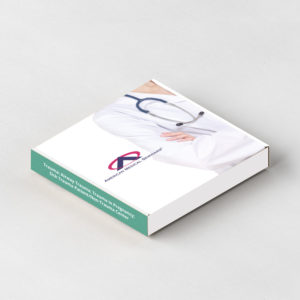
AMS – 2020-EMtr-Emergency Medicine – Trauma: Airway Trauma; Trauma in Pregnancy; Sick Trauma Patient/Non-Trauma Center
View ProductQuick View -
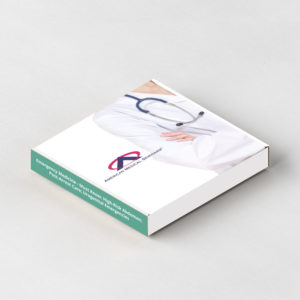
AMS – 2020-07EMmk-Emergency Medicine – Must Know: Loftier-Risk Abdomen; Post-Arrest Care; Urogenital Emergencies
View ProductionQuick View -
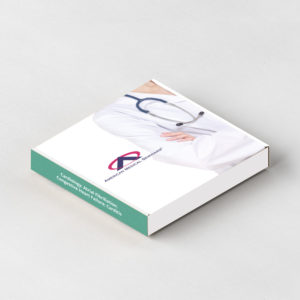
AMS – 2020-07EMcd-Emergency Medicine – Cardiology: Atrial Fibrillation; Congestive Heart Failure; Carditis
View ProductQuick View -
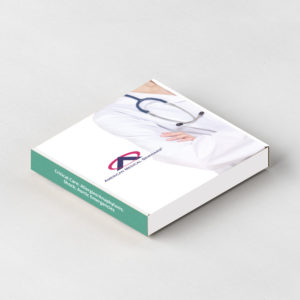
AMS – 2020-07EMc1-Emergency Medicine – Critical Intendance: Allergies/Anaphylaxis; Daze; Aortic Emergencies
View ProductQuick View -
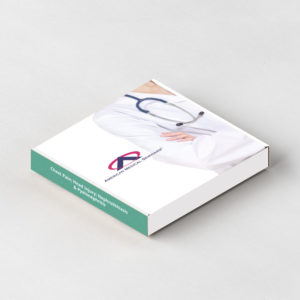
AMS – 2020-07EMed-Emergency Medicine – Emergency Department Challenges: Chest Pain; Head Injury; Nephrolithiasis & Pyelonephritis
View ProductionQuick View
Source: https://www.americanmedicalseminars.com/product/ams-2020-07-emergency-medicine-series-package
0 Response to "Emergency Medicine a Comprehensive Review Download Free Videos"
Post a Comment